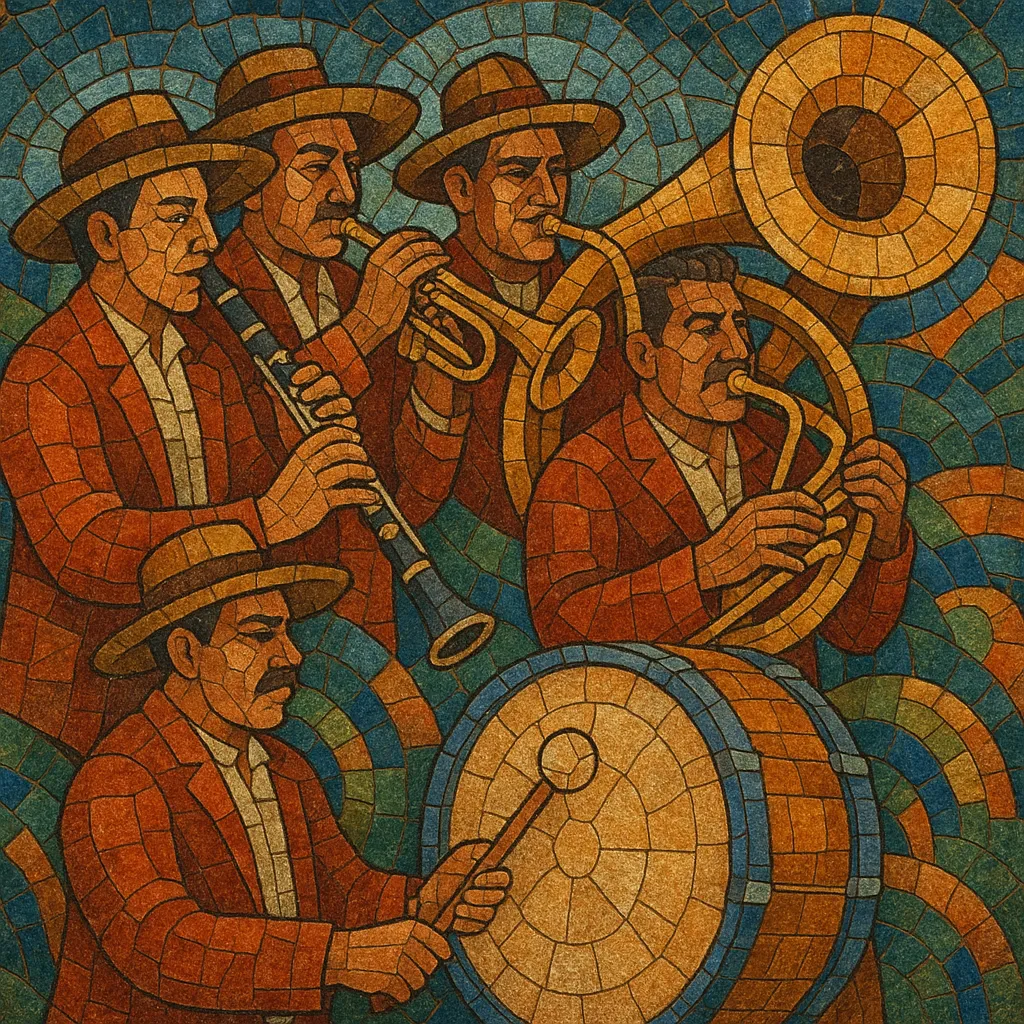Bandas de viento de México are Mexican wind and brass ensembles that perform for fiestas, processions, community dances, and stage concerts. They feature clarinets, trumpets, trombones, horns, and tuba/sousaphone supported by tarola (snare) and a large bass drum known as the tambora.
Their repertoire blends European dance forms such as polka, waltz, schottische, and pasodoble with Mexican song forms like rancheras and corridos, alongside cumbias and contemporary pop arrangements. While closely related to the better-known Banda sinaloense, the term "bandas de viento" also encompasses rich town-band traditions across states like Oaxaca, Puebla, Zacatecas, and Jalisco. The sound is powerful, festive, and highly danceable, with unison clarinet lines, bright trumpet harmonies, and the tuba’s characteristic oom-pah pulse driving the groove.
European military and civic brass bands took hold in Mexico during the 19th century (notably through military presence and formal music education in the Porfiriato). Communities adopted the instrumentation and march traditions, fusing them with local musical practices. In Indigenous and mestizo towns—especially in Oaxaca—bandas de pueblo (town bands) became central to social and religious life, providing music for patron-saint festivals, processions, and public dances.
As German, Czech, and other Central European dance forms (polka, waltz, schottische) spread through northern and central Mexico, wind bands incorporated these rhythms and harmonies. By the early 20th century, regional variants emerged: Sinaloa ensembles emphasized bright clarinets and powerful tambora, while central and southern states maintained more woodwind-heavy town bands. Radio, recordings, and civic support further professionalized ensembles and broadened repertoires to include rancheras and corridos.
Ensembles like Banda El Recodo (founded 1938) helped codify a modern, touring band model with standardized instrumentation, repertoire, and arrangements. Urban migration and cross-border circuits (especially in the U.S.) expanded audiences. Bandas accompanied vocalists, adapted pop ballads, and recorded extensively, cementing the brass-and-percussion sound as a pillar of música regional mexicana.
The banda aesthetic continues to influence and intersect with substyles and fusions—from romantic ballads to cumbia-inflected hits and electronic hybrids. While Banda sinaloense dominates charts, the broader "bandas de viento" tradition remains vital in community contexts, music schools, and municipal programs, sustaining a living link between ceremonial functions, public culture, and commercial stages.


